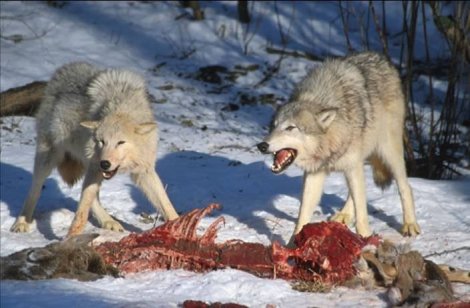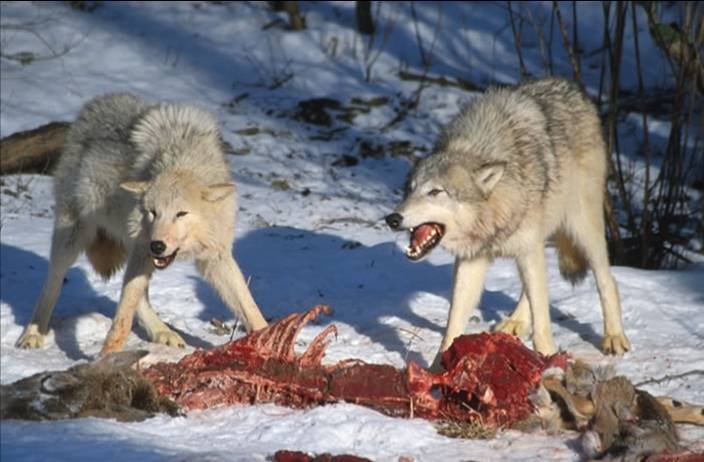
Patrick BellCan we polish this guy off and still make the 5 p.m. Cardio Barre (TM)?
You know how you look at dogs and you’re like, “Wow, you’re cute and snuggly”? But then you look at wolves and you’re like, “Wow, you’re hot! You are so cut! You have such long lean muscles!” Well, scientists studying DNA from wolves and dogs think there’s a reason that dogs evolved into adorable, soft, sometimes squishy pets while wolves remain lean and sinewy, with a sort of telegenic rough trade appeal about them, and the reason has to do with the ability to digest carbs.
Scientists at Upssala University in Sweden recently completed a study, printed in the journal Nature, which compared the DNA of 12 wolves and 60 dogs. They looked at gene variations that the dogs had in common with each other, but not with the wolves. What they discovered is that dogs have many more genes that are involved in, and in some cases absolutely essential to, starch or fat metabolism. One of these genes is responsible for making an enzyme called alpha amylase, which is extremely effective in digesting starch, and dogs have five times as much alpha amylase activity as wolves.
The researchers envision the evolution of wolves into dogs happening something like this: There were some wolves hanging around human settlements. They were eating meat leftovers. They kept hanging around the humans. The humans started to eat roots and stuff. The wolves that could digest carbs started to eat scraps from this expanded, more carb-heavy diet, and hung around more and more, and ate more carbs, while the wolves that could not stayed farther away from the human settlements, as their cast-off garbage was not as appealing. And, a couple billion loaves of bread later, we got dogs.
So if you’re anti-carb, just remember that yeah, they can make you chubby, and some of them, like the sugar kind or the white bread kind, have absolutely no nutritional value. But if carbs did indeed have a hand in creating these beautiful animals, they are OK by us.




